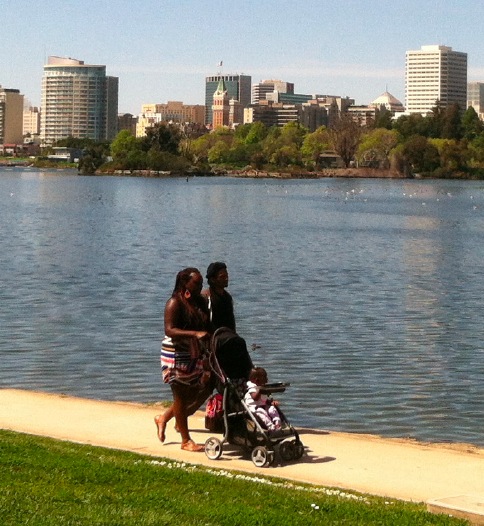GREEN FOR ALL
Translating the Value of Water Infrastructure Using Community Benefit Strategies
Introduction
 Urban dwellers count on numerous agencies to make their cities safe and comfortable to live in. By far one of the most essential functions that public agencies perform is delivering safe and reliable water services.
Urban dwellers count on numerous agencies to make their cities safe and comfortable to live in. By far one of the most essential functions that public agencies perform is delivering safe and reliable water services.
Without water utilities, city residents would not be able to count on having clean water to drink, and businesses would not be able to count on reliable commercial water supplies. We rely on water utilities to clean up and manage sewage and wastewater, and safeguard the health of our lakes, rivers, and natural resources by keeping them free of toxic pollution. While the public may not think about it, residents and businesses interact with and depend upon the services, workers, and infrastructure of water utilities everyday.
But that is not all our water utilities do. They also serve as engines of economic development in their communities—employing hundreds, sometimes thousands of people directly or indirectly through their contracting processes for goods and services. For example, in San Francisco, California, the San Francisco Public Utilities Commission’s $4.6 billion Water System Improvement Program has already created 33,000 jobs. Water utilities make long-term infrastructure investments that support local and regional economies. Their networks of pipes and tunnels are literally the foundation upon which cities are built.
Yet our water infrastructure is essentially invisible and its value often goes unnoticed by consumers and ratepayers. Coupled with a dramatic decrease in federal support for water investments, this trend has resulted in unacceptable neglect of water infrastructure. In 2013, America’s crumbling water infrastructure received a “D” grade from the American Society of Civil Engineers. As our water systems age and decline, the health, safety, and prosperity of our communities are increasingly at risk. Meanwhile, climate change, marked by heavy rains, extreme weather, and rising sea levels, magnifies the problem and perpetuates a water crisis we can no longer ignore.
To meet this challenge over the coming decades, cities will have to invest tremendous resources in enhancing stormwater systems, often through the use of green infrastructure solutions. As utilities work to address pressing operational challenges, they also have the ability to transform the neighborhoods in which they operate and serve. Water utilities, which are responsible for overseeing the construction and maintenance of water systems, will need the approval of the public, political leaders, and other members of their communities in order to generate support for stormwater projects. If they are to build the broad coalitions needed to drive increased infrastructure investments, utilities will have to effectively communicate and illustrate how stormwater investments provide a wealth of measurable and sustainable environmental, social, and economic benefits.
This white paper focuses on one of the most promising strategies water utilities can use to develop broad public support: Embracing triple-bottom-line outcomes that deliver community benefits like jobs, business opportunities, green space, safer and more beautiful streets, and other local amenities. Selected policies and programs designed to catalyze community and economic development allow water utilities to show the public that they provide efficient and environmentally beneficial infrastructure that fosters local economic and social improvements.
Download full version (PDF): Clean Water, Strong Communities
About Green For All
greenforall.org
“Green For All is dedicated to improving the lives of all Americans through a clean energy economy. We work in collaboration with the business, government, labor, and grassroots communities to increase quality jobs and opportunities in the green industry – all while holding the most vulnerable people at the center of our agenda.”






 RSS Feed
RSS Feed